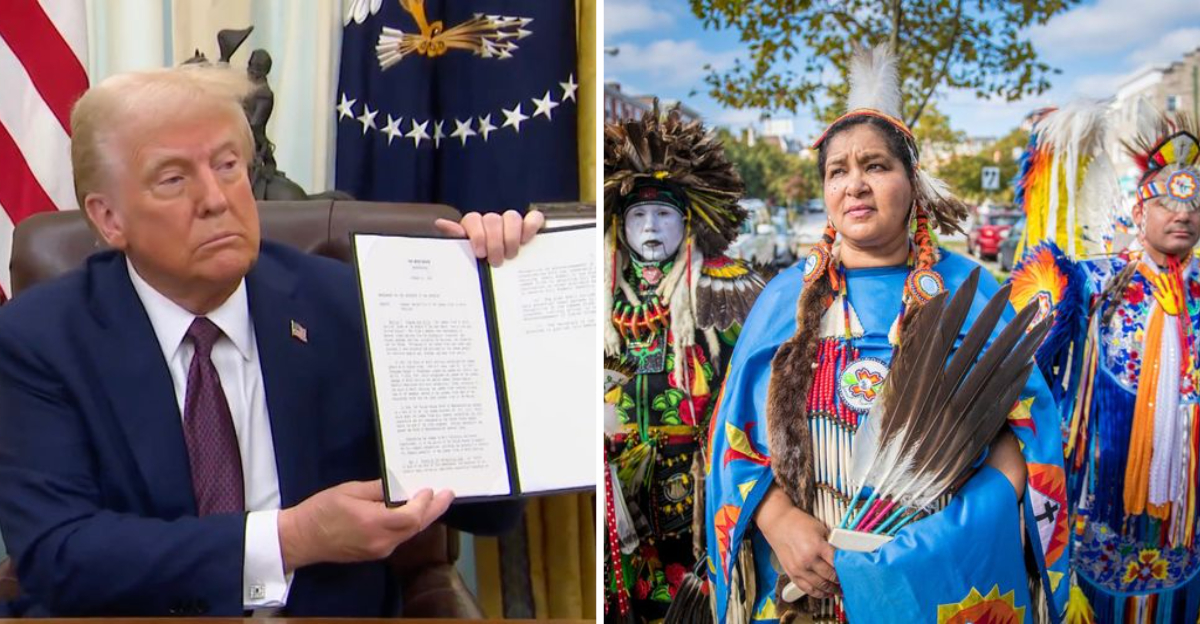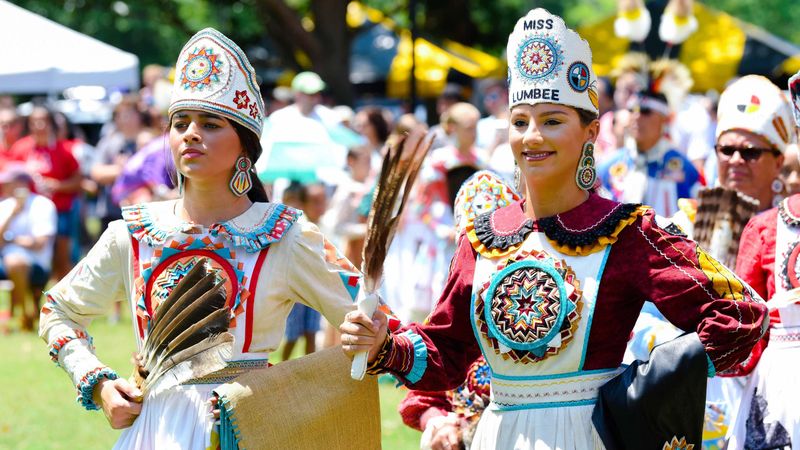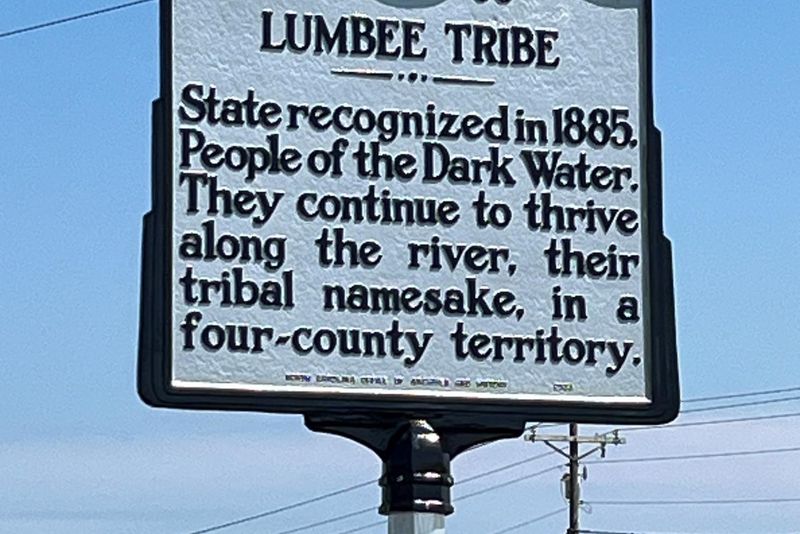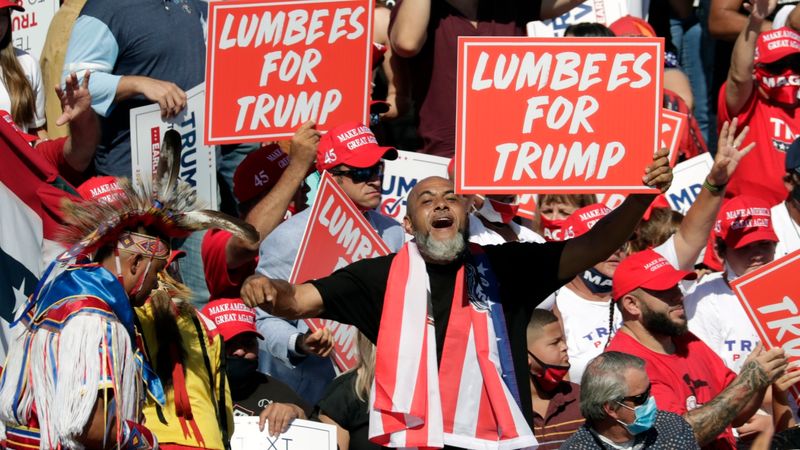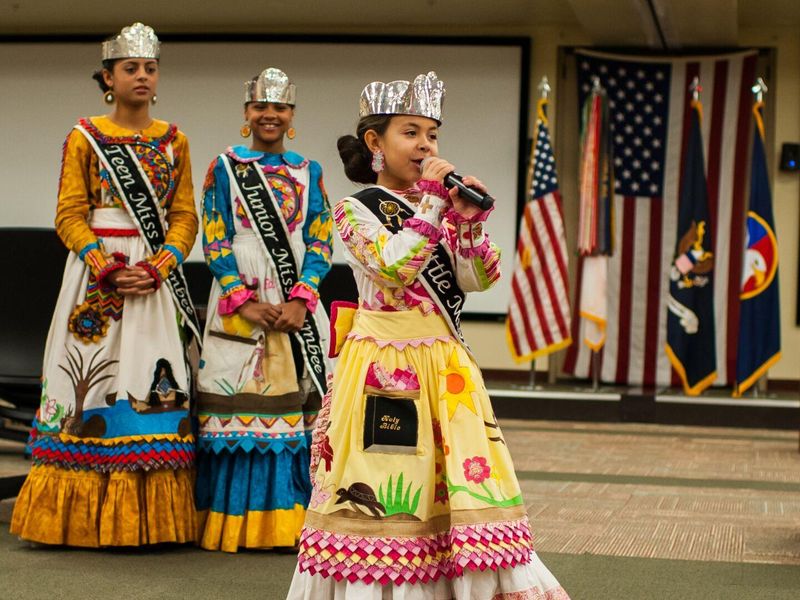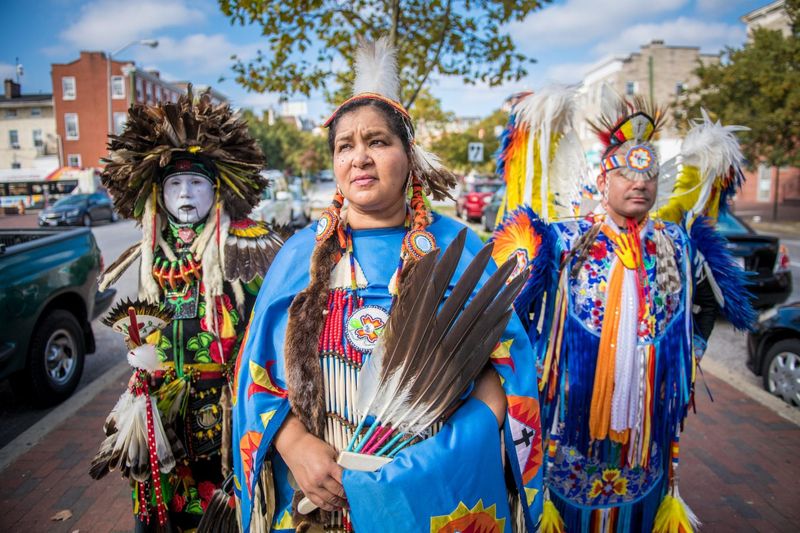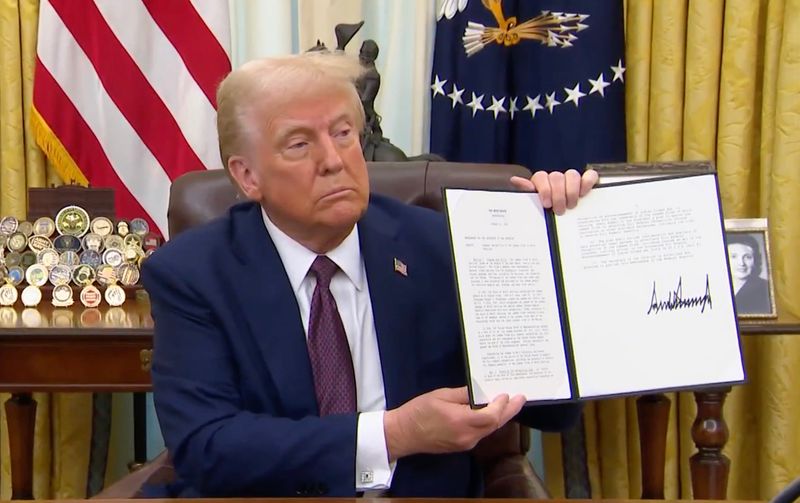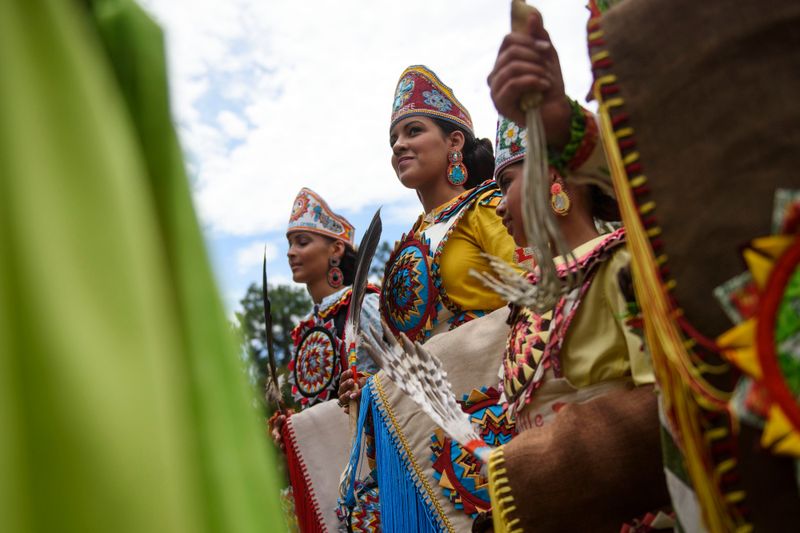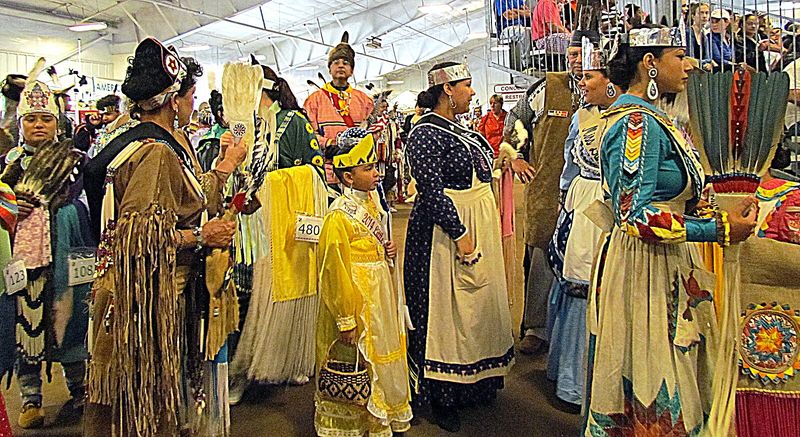The Lumbee Tribe, based in North Carolina, has been seeking federal recognition for decades. This journey has been fraught with challenges, but recent developments, including support from former President Donald Trump, have brought new hope.
Federal recognition would unlock various benefits and rights for the Lumbee people, transforming their socio-economic landscape.
This blog explores 12 fascinating facts about the Lumbee Tribe and their ongoing struggle for recognition, shedding light on historical, political, and cultural dimensions of this significant issue.
1. Who Are the Lumbee?
The Lumbee Tribe, primarily located in North Carolina, is one of the largest Native American tribes in the eastern United States.
Despite their significant population and rich cultural heritage, the Lumbee have faced numerous challenges in gaining federal recognition. The tribe’s name is derived from the Lumber River, which winds through their historical territory.
Their cultural identity is a blend of Native, European, and African influences, making them unique among Native American tribes. For more than a century, the Lumbee have been fighting to have their tribal identity and rights recognized by the United States government.
2. Decades of Struggle
The Lumbee Tribe’s pursuit of federal recognition has been a long and arduous journey. Since the late 19th century, they have petitioned the U.S. government multiple times, facing rejection and setbacks.
In 1956, the Lumbee Act was passed, recognizing them as Indians but denying full federal benefits. This partial recognition left the tribe in a state of limbo, neither fully acknowledged nor completely ignored.
Over the decades, various bills have been introduced in Congress to grant them full recognition, yet none have succeeded. The struggle continues, with each generation of Lumbee fighting for their rightful status.
3. Trump’s Role in the Recognition Battle
Donald Trump’s involvement in the Lumbee recognition battle marked a significant political shift. During his presidency, Trump expressed support for the tribe’s federal recognition, bringing national attention to their cause.
In 2020, Trump endorsed the Lumbee Recognition Act, a move that surprised many, considering the tribe’s historical neglect by previous administrations. This endorsement reinvigorated the Lumbee’s fight, providing a political boost and raising public awareness.
While the bill did not pass during his term, Trump’s support highlighted the tribe’s plight and underscored the complex intersection of politics and Native American rights in the United States.
4. What Federal Recognition Means
For the Lumbee Tribe, federal recognition is not just a legal status but a transformation of their future. Recognition would grant them access to essential federal programs, including healthcare, housing, and education support.
This change could dramatically improve the living standards of many Lumbee families, addressing socio-economic disparities they have faced for generations. Additionally, federal acknowledgment would affirm their cultural identity, offering protection and resources to preserve their heritage.
However, the path to recognition involves navigating complex political landscapes and addressing opposition from other tribes, making it a challenging yet vital goal for the Lumbee people.
5. A History of Broken Promises
The Lumbee Tribe’s history with the United States government is marked by a series of broken promises. Despite numerous attempts at negotiation and legislation, the tribe has been repeatedly let down.
The 1956 Lumbee Act, which acknowledged their existence but withheld full recognition, epitomizes this pattern of unfulfilled promises. These setbacks have fostered a sense of mistrust towards governmental institutions among the Lumbee.
Each broken promise has not only affected the tribe’s legal standing but also hindered their socio-economic development. Nevertheless, the Lumbee remain resilient, continuing to advocate for their rights and recognition.
6. The Political Chess Game
The quest for Lumbee recognition is entangled in political maneuvering. Various political parties have used the issue to gain leverage, often making promises that remain unfulfilled.
The tribe’s large voting population in North Carolina makes them a significant political entity, attracting attention from candidates seeking electoral support. However, the recognition process involves balancing tribal, state, and federal interests, which adds complexity to the situation.
Political endorsements, such as Trump’s, highlight the tactical nature of these engagements, where the Lumbee are both participants and pawns. Despite this, their determination to achieve recognition remains steadfast.
7. Native Rights and Federal Benefits
Federal recognition for the Lumbee Tribe would unlock a myriad of benefits that other recognized tribes enjoy. Access to healthcare, education, and housing assistance are among the most critical.
These benefits would address long-standing inequities faced by the Lumbee, providing necessary resources to improve their quality of life. Furthermore, recognition would enable the tribe to govern itself more effectively, with rights to manage lands and resources.
However, the process of gaining recognition is fraught with challenges, including political opposition and bureaucratic hurdles. Yet, the potential benefits make this fight an essential pursuit for the Lumbee.
8. Opposition and Controversy
The Lumbee Tribe’s quest for recognition has not been without controversy. Some federally recognized tribes oppose their recognition, fearing it could dilute their own status and resources.
This opposition stems from concerns about the authenticity of the Lumbee’s tribal identity and historical claims. Critics argue that the Lumbee do not meet the necessary criteria for recognition, while supporters emphasize their unique cultural heritage and longstanding presence in North Carolina.
The debate over Lumbee recognition highlights broader tensions within Native American communities about identity, resources, and the criteria for federal acknowledgment. This controversy adds complexity to their pursuit of recognition.
9. How Trump’s Administration Reshaped the Future
Under Trump’s administration, the Lumbee Tribe’s recognition efforts gained new momentum. By publicly supporting their cause, Trump’s administration brought unprecedented attention to their struggle.
This political backing encouraged legislative efforts and sparked nationwide discussions about the Lumbee’s status. While the recognition was not achieved during his tenure, the foundation laid by his administration has influenced subsequent political actions and debates.
Trump’s support reshaped the landscape for the Lumbee, highlighting the intricate relationship between political power and Native American rights. The tribe continues to build on this newfound attention, striving for the recognition they have long sought.
10. Congress and the Lumbee
The Lumbee Tribe’s battle for recognition has repeatedly found its way to the halls of Congress. Over the years, numerous bills have been introduced to grant them federal status, yet none have succeeded.
This ongoing legislative struggle underscores the complexities of navigating U.S. political systems. Each new session of Congress brings renewed hope and challenges, as the Lumbee work tirelessly to advocate for their rights.
Despite setbacks, their persistent lobbying efforts have kept the issue alive, drawing support from various lawmakers. The future of the Lumbee’s recognition now largely depends on Congressional actions and continued advocacy.
11. Public Perception and Media Coverage
The Lumbee Tribe’s story has often been underrepresented in mainstream media. Despite their long-standing struggle for recognition, public awareness remains limited. Media coverage tends to focus on more prominent Native American issues, leaving the Lumbee’s plight in the shadows.
However, recent political developments, such as Trump’s endorsement, have begun to change this narrative. Increased media attention has helped shed light on the complexities and significance of the Lumbee’s fight.
As public interest grows, there is a greater opportunity to amplify the tribe’s voice, encouraging broader support for their pursuit of federal recognition and justice.
12. Beyond Politics: Cultural Legacy
The Lumbee Tribe’s legacy extends beyond their political struggle for recognition. Their rich cultural heritage, characterized by unique traditions, crafts, and music, plays a vital role in their identity.
Despite the challenges they face, the Lumbee have maintained and celebrated their cultural practices, passing them down through generations. These traditions serve as a testament to their resilience and contribute to the diverse tapestry of Native American cultures.
By achieving federal recognition, the Lumbee hope to preserve and promote their heritage on a broader scale, ensuring that their history and contributions are acknowledged and celebrated within the United States.
